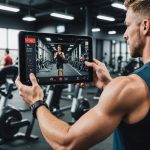Tourism boards in the UK face a unique challenge: how to stand out in a sea of travel options. Social media influencers offer powerful solutions. Their authenticity and reach can amplify a destination's message, drawing in a curious, engaged audience. However, strategy matters. It's not just about partnerships; it's about creating meaningful, lasting impressions. Explore innovative tactics that can elevate your campaigns and harness the true potential of influencer marketing in tourism.
Understanding Social Media Influencer Marketing for Tourism Boards
Social Media Influencer Marketing has become an essential tool for Tourism Boards looking to engage with potential travelers. By leveraging influencers, tourism boards can reach a broad audience through authentic storytelling and personal recommendations. This approach is particularly impactful as it taps into the trust and relatability that influencers have cultivated with their followers.
Also read : Crafting a Rewarding Loyalty Program for UK Coffee Shops: Boosting Customer Retention and Repeat Visits
The current landscape of social media usage among travelers shows a significant shift towards platforms like Instagram and TikTok, where visual content dominates. Travelers often seek inspiration for their next destination through these channels, making them a fertile ground for tourism promotion. In the UK Tourism sector, for example, influencers play a crucial role in showcasing picturesque locales and unique experiences, enticing both domestic and international visitors.
Understanding the key demographics and behaviors of potential tourist audiences on social media is vital for effective marketing. Millennials and Gen Z are particularly active on these platforms, valuing experiences and authenticity over traditional advertising. They are more likely to be influenced by peer recommendations and user-generated content, which aligns perfectly with influencer marketing strategies. By targeting these groups, tourism boards can foster a deeper connection and drive engagement, ultimately boosting tourist numbers and enhancing destination appeal.
Also to read : Crafting a Rewarding Loyalty Program for UK Coffee Shops: Boosting Customer Retention and Repeat Visits
Identifying the Right Influencers for UK Tourism Boards
Selecting the right influencers for the tourism sector is crucial for effective marketing campaigns. The first step is to ensure audience alignment. This means choosing influencers whose followers mirror the demographics and interests of potential tourists. For instance, if a tourism board aims to attract young adventurers, influencers with an audience keen on travel and exploration are ideal.
Engagement metrics are another vital consideration. High follower counts are appealing, but they don't necessarily equate to influence. Evaluating metrics such as likes, comments, and shares provides insight into how actively an influencer's audience interacts with their content. This engagement level is often a better indicator of an influencer's impact than sheer numbers.
Several tools and platforms can aid in influencer selection. Websites like AspireIQ and Traackr offer databases of influencers, complete with analytics on their reach and engagement. Additionally, social media platforms themselves provide insights into influencer performance, helping tourism boards make informed decisions. By using these resources, tourism boards can identify influencers who not only have a large reach but also resonate well with their target audience, ensuring a successful marketing strategy.
Developing a Collaborative Strategy with Influencers
Establishing a successful collaboration strategy with influencers requires careful planning and clear communication. The first step is to define the goals of the campaign and identify how influencers can help achieve them. This involves selecting influencers who align with the brand's values and have a genuine connection with their audience.
Campaign planning should include discussions about content themes, formats, and timelines. It's crucial to involve influencers in the creative process, allowing them to contribute their unique style and voice. This not only fosters authenticity but also ensures the content resonates with their followers, enhancing engagement.
Content creation is a collaborative effort. Best practices include setting clear guidelines while allowing influencers the freedom to innovate. This balance helps maintain the brand's message while leveraging the influencer's creativity. Regular check-ins and feedback loops are essential to keep the project on track and address any issues promptly.
Clear communication and setting expectations are vital. Both parties should agree on deliverables, deadlines, and compensation. Transparent agreements help prevent misunderstandings and build a strong working relationship. By following these steps, tourism boards can create impactful campaigns that effectively engage target audiences.
Measuring the Success of Influencer Campaigns
Evaluating the impact of influencer marketing in the tourism sector requires a focus on Campaign Metrics. Key performance indicators (KPIs) are essential for Success Measurement. They provide a structured approach to assess the effectiveness of a campaign. Common KPIs include engagement rates, reach, and conversion rates. These metrics help tourism boards understand how well influencers are driving interest and action among potential travelers.
Tracking these metrics involves various techniques. For instance, engagement can be monitored through likes, comments, and shares on social media posts. Conversions, such as bookings or inquiries, can be tracked using unique URLs or discount codes provided by the influencers. Overall reach can be evaluated by assessing the total audience exposure across all influencer platforms.
ROI Assessment is another critical aspect, ensuring the investment in influencers translates into tangible benefits. A successful campaign not only boosts engagement but also generates a positive return on investment. Case studies in the tourism industry demonstrate effective measurement strategies. For example, a campaign might show how a specific influencer collaboration led to a significant increase in website traffic and bookings, showcasing the practical benefits of precise measurement.
Case Studies of Successful Influencer Campaigns in UK Tourism
Exploring case studies of successful influencer campaigns offers valuable insights into the UK tourism sector. These examples highlight effective strategies and provide a roadmap for future initiatives.
One notable campaign involved a collaboration between VisitScotland and several travel influencers. This initiative aimed to showcase Scotland's scenic landscapes and unique cultural experiences. By engaging influencers with diverse audiences, the campaign successfully increased tourism interest and bookings. The influencers shared authentic stories and stunning visuals, creating an emotional connection with potential travelers.
Another successful example is VisitBritain's partnership with lifestyle influencers to promote lesser-known destinations. This strategy not only boosted tourist numbers in these areas but also distributed visitor traffic more evenly across the country. The campaign's success was attributed to the influencers' ability to present destinations in a relatable and appealing manner.
Key takeaways from these campaigns include the importance of selecting influencers whose values align with the destination's brand and ensuring authentic storytelling. Additionally, fostering genuine connections between influencers and their audiences enhances engagement and trust.
By analysing these successful campaigns, tourism boards can identify best practices and apply these lessons to future influencer marketing strategies, optimising their impact and reach.
Future Trends in Influencer Marketing for Tourism
The tourism industry is poised to experience significant shifts due to emerging trends in influencer marketing. As social media platforms evolve, new opportunities arise for tourism boards to connect with potential travelers. One major trend is the rise of micro-influencers, who often have smaller but highly engaged audiences. These influencers can provide more authentic and relatable content, which resonates well with consumers seeking genuine experiences.
Looking ahead, the integration of augmented reality (AR) and virtual reality (VR) in influencer marketing is expected to revolutionize the tourism sector. These technologies enable influencers to offer immersive experiences, allowing potential tourists to explore destinations virtually before visiting. This approach not only enhances engagement but also aids decision-making for travelers.
To stay ahead, tourism boards must adapt to changes in consumer behavior and technology. This involves embracing new platforms and formats, such as short-form videos and live streaming, which continue to gain popularity. Additionally, fostering long-term partnerships with influencers can lead to more impactful campaigns, as these collaborations build trust and loyalty among audiences.
By understanding and leveraging these future trends, the tourism industry can create innovative marketing strategies that effectively capture the attention of modern travelers.






